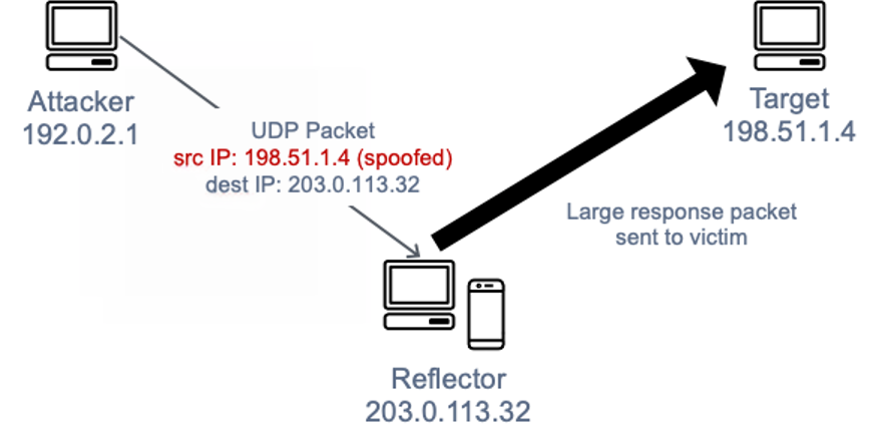Why is the User Datagram Protocol UDP so usually used in DDoS attacks?
Explanation
In three words: connectionless spoofed amplification.
Amplification is actually a natural consequence of client-server communications: When you request something from a server, the response you get is typically larger than your request itself, often many times the size. If you have a botnet handy, and you use it to send millions of bogus requests to thousands of servers, all of which responses are targeted at a single host, you’ve got yourself a DDoS.
But how do you do that redirection? That’s where source IP spoofing comes in, and where UDP has the “edge” over the more commonly-used TCP.
See, TCP requires you to establish a connection before you can talk to the other party. Clearly, you don’t want to have that connection be to you, so here’s what happens:
- You send a connection request (SYN) to server with source IP
in.no.cent.vic. - Server sends a request+acknowledgement (SYN+ACK) to
in.no.cent.victo confirm the connection. in.no.cent.vicgoes WTF? and rejects the request.- You failed, as you should.
UDP is connectionless, so you just send the service request (“I need all the data for this thing here”) with source IP in.no.cent.vic to the server, which promptly obliges by immediately sending, well, all the data to in.no.cent.vic. Multiply that by a few million requests over a few thousand servers, and you get your DDoS.
Of course, far more services use TCP than UDP, but DNS is one UDP-based service that is popularly used for DDoS attacks precisely because there are thousands of DNS servers around the Internet, and DNS response packets can be 50 or so times as large as the corresponding requests.
CISA - DNS Amplification Attacks
Wrapping up
Just by this joke image


